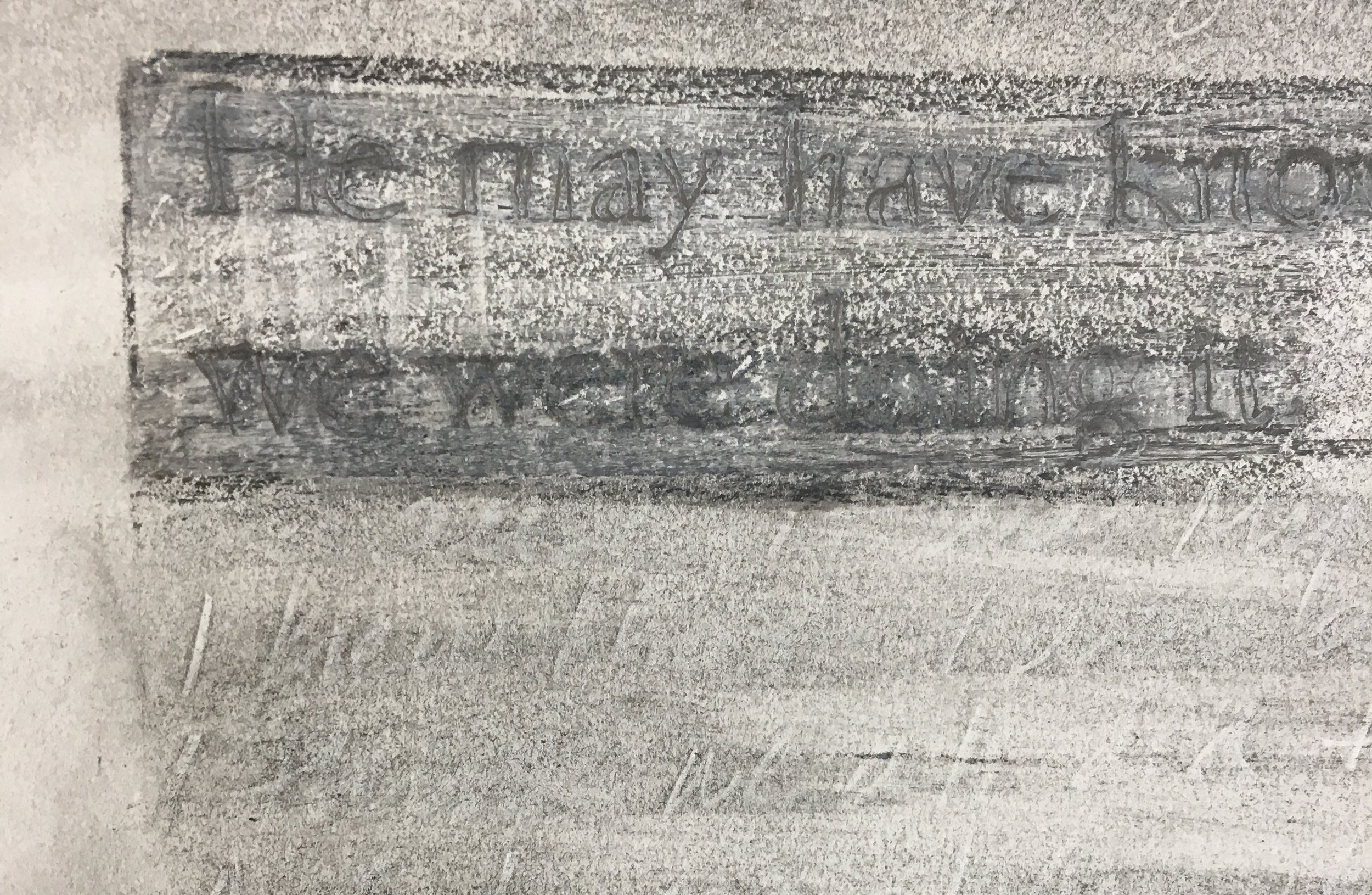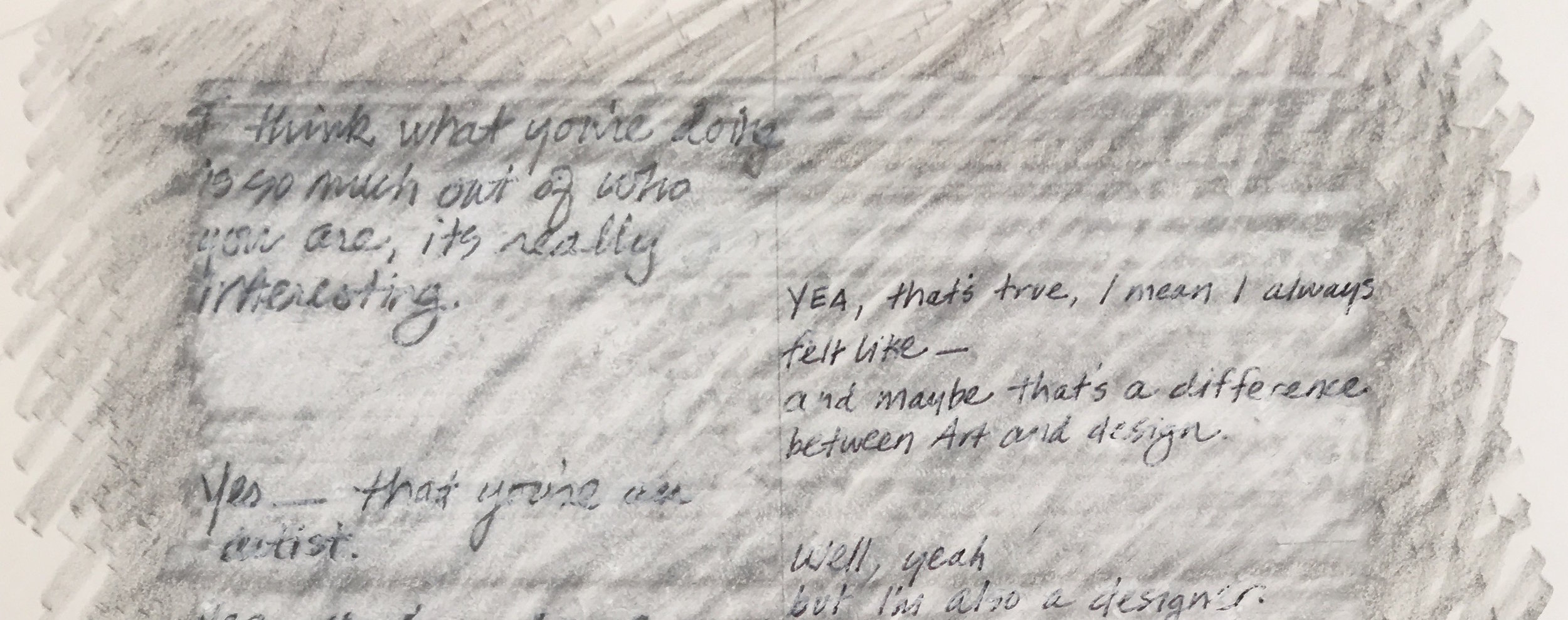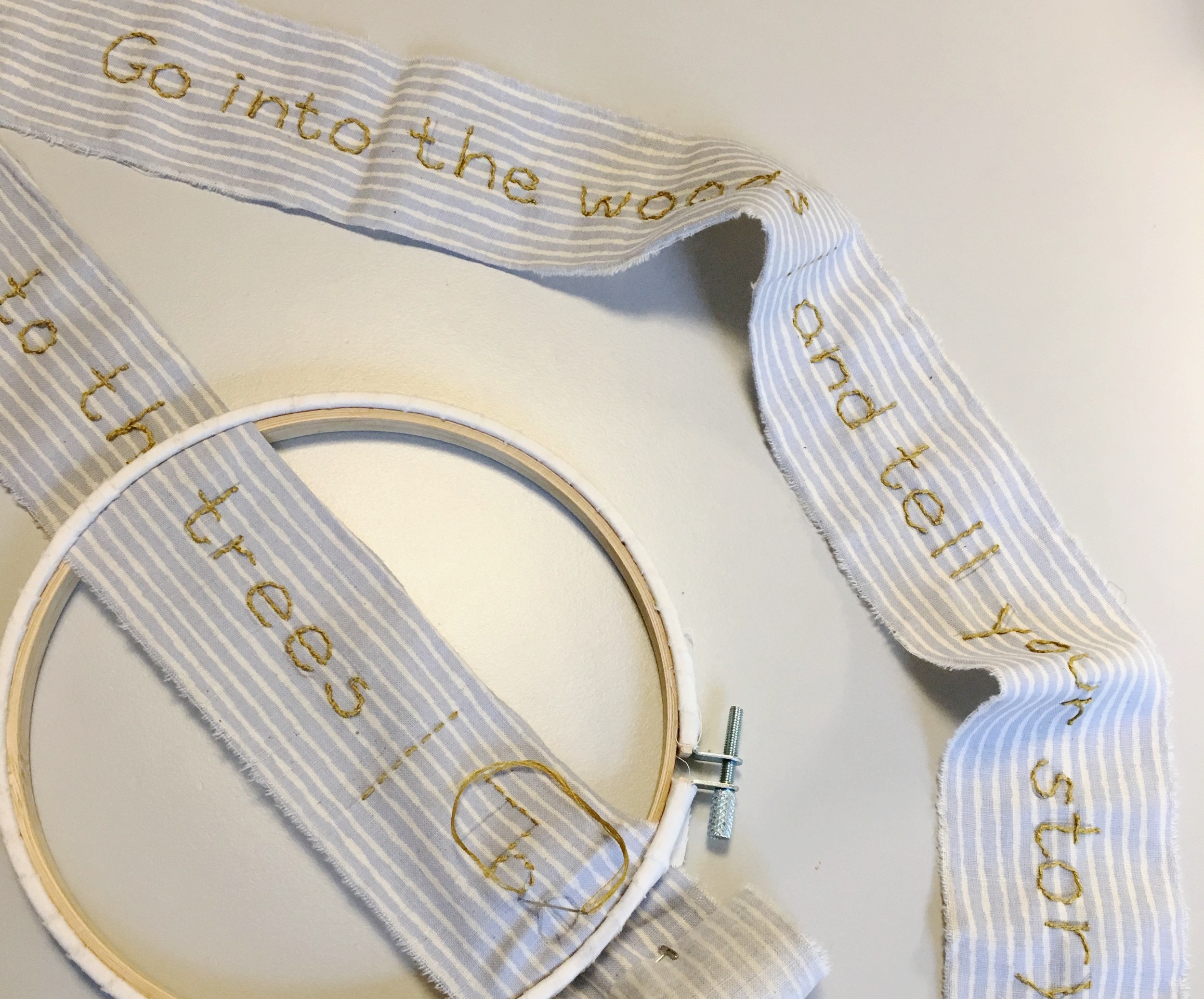With only a few more days to go, I thought I would write about the work I’ve done here. It will be good preparation for the public presentation on Monday evening!
My main focus here has been to transcribe recordings of my mother talking about her life. I had worked with one particular story in the Traced and Transcribed series, and I will continue this work with new transcriptions and a clearer image of why this is important.
The project begins with memory and recall. In my prior work, Engram 1 and Engram 2, I looked at how the mind retrieves information in bits, and then assembles them together each time a cue triggers the process. For this work, I’m focusing on uncovering and making visible an ephemeral source, the recorded conversation.
Transcribing, or making the audible into written form, looses the nuances of speech when done mechanically. I’ve chosen to hand-write the transcription because 1) it goes more quickly for me than typing, 2) I capture more of the cadence and tones, and 3) it suggests a more intimate exchange between mother/daughter, designer/artist, mentor/protege.
Next, I listen to the recording while drawing and making marks that challenge the Perils of the Transcript. The marks may be legible, or not, depending on how much emphasis I want a particular phrase or word. Expressive typography can recapture some of the lost texture of a mechanical transcription while acknowledging the complexity of language. Here’s an example I recently saw in Amsterdam:








